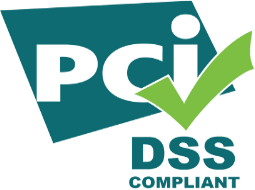Want to know more about your outbound call center performance? Metrics and KPI tracking will help you do this with ease. Measuring and examining your call center metrics and KPIs (key performance indicators) will provide valuable information about your outbound call center’s performance and identify any weak spots. This data will help you make necessary improvements and help give a better outbound customer service experience to your clients and leads.
At TeleDirect, we know you value results — and we have the outbound call center KPI knowledge to make sure you get there. Read on to learn more about the key metrics and KPIs businesses should consider with their outbound call centers. If you come away with any lingering questions, get in touch with our team. We love a good phone call.
Key Metrics and KPIs for Outbound Call Centers
Metrics and KPIs measure a facet of a company’s performance — in this case, their outbound call center. This is measured by setting and communicating specific goals — generally called “targets” or “indicators.” These targets and indicators will be different depending on the industry and business. Call and contact centers tend to focus on customer satisfaction and agent performance.
Customer Satisfaction Metrics and KPIs
Customer satisfaction metrics and KPIs revolve around the experience that consumers have with your company. In the case of an outbound call center, it refers to the customer’s experience when they are on the receiving end of contact from your business. This includes things like cold calls, fundraising, callbacks or follow-ups.
Some typical customer satisfaction KPIs for an outbound call center include:
Average Handle Time
This measures, on average, how long your customers are on the line with your agents. Ideally, your customer service calls will last under a certain length, though the ideal call length varies depending on the industry and product.
Customer Effort Score (CES)
Are your customers satisfied? CES is often determined by satisfaction surveys, and explains how easily your outgoing agents met your customers’ needs.
Average Call Length
This KPI measures the average overall length of an outgoing phone call, including hold times and transfers. As with average handle time, the “right” length will depend on the industry.
Agent Performance Metrics and KPIs
These metrics and KPIs measure the performance of your staff — in this case, outbound call center agents. Some agent performance KPIs for an outbound call center include:
Call Quality
This assesses how well your agents perform in conversation with customers. Are they polite? Helpful? Do they use the proper scripting and verbiage?
Calls Per Agent
This KPI is a way of measuring the productivity levels of your outbound call center agents. It assesses how many outbound calls are made during a shift and whether they are all answered by customers.
Agent Sales Rate
How often are your outbound agents closing deals in an average day or week? This KPI measures how well your agents move customers through the proper sales funnel.
Best Practices for Outbound Call Centers
So, let’s say you’ve been measuring your outbound call center metrics, and the results don’t look promising. We know that feels like a blow, but it will be OK. Thanks to KPI tracking, you’ve identified a problem and can be on the road to fixing it. Several practices help improve overall call center success. We will discuss three of the most crucial below.
Scripting
A good agent script can take your outbound call center to new heights. Not only does this allow you to formulate exactly what you want your agents to say, but you can also provide written responses to various questions and comments so the entire call flows efficiently and naturally. You can also personalize your call center experience through scripting. Your outbound agents will speak to customers according to your unique verbiage, providing a more immersive brand experience.
Call Monitoring
Ever called a company and consented to your call being recorded for quality or training purposes? That’s to help measure call quality KPIs. By monitoring your outgoing calls, you can see where your agents are communicating well and where they need improvement.
Ongoing Training
In the customer service world, there’s no room for complacency. By continuously training and checking in with your outbound agents, you can ensure they’re providing customer support that aligns with your clientele’s current needs.
Challenges and Solutions for Outbound Call Centers
If you’re running your own outbound call center, you may encounter some challenges. Some of the most common issues for an outbound call center include:
Compliance Issues
Compliance refers to the legal end of running a business. Occasionally, call centers run into compliance issues relating to security breaches. This can lead to significant customer problems and, in turn, the business. The best solution to this potential challenge is to take a professional route for your outbound call center. Outsourced providers (like TeleDirect) have safeguarding measures to protect sensitive data collected during customer contact.
Low Answer Rates
You can’t force folks to answer their phones. Your agents can leave engaging and personalized messages or voicemails when they don’t receive an answer, with clear instructions on how to return the call. A good script will make this straightforward.
Call Fatigue
If your staff is exhausted from handling outbound calls on top of their assigned duties, that’s reasonable. They’re doing two jobs at once! It’s time to outsource your outbound call center so they can focus on their hired responsibilities, not customer service or sales. The TeleDirect team can help you build your call center today. Simply call (800) 776-1081 today to get started.

Smitha is the CEO and CFO of TeleDirect. Smitha obtained her license as CPA in 2007 from the California Board of Accountancy. Smitha is a results-driven leader with a proven track record of driving profitability and growth. With over 20 years of experience in business and finance, Smitha’s expertise in developing and implementing strategic plans has led to significant improvements in customer satisfaction, employee engagement, and operational efficiency. Smitha’s expertise in financial analysis and strategic planning allows her to develop innovative solutions that balance the needs of clients, employees, and shareholders. Smitha is passionate about building strong relationships with clients and fostering a culture of excellence that empowers employees to deliver outstanding results.







